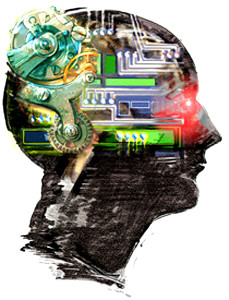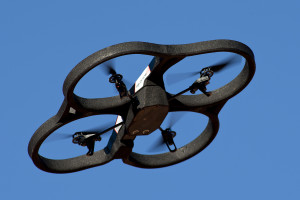Machines that can learn are becoming more integrated into our lives at every turn. Drone delivery is already available to us and humorous stories about self-driving cars being pulled over are already circulating. The future is, as they say, here. With artificial intelligence already so present, important changes in technology are on their way. Among the most significant changes we can anticipate is the dispersion of capability. Soon, making intelligent machines will no longer be the exclusive province of deep-pocketed organizations.
Dave Gershgorn, assistant tech editor at Popular Science, will appear at SXSW Interactive to speak on key developments helpi ng to bring the ability to create artificial intelligence to what he describes as tinkerers in garages across the country. According to Gershgorn, people with the desire to create such machines need three things: software, data and hardware. The innovation that has inspired this panel is one that makes the third piece of that trifecta as widely available as the other two: the production of affordable chips with the capability of running machine learning processes.
ng to bring the ability to create artificial intelligence to what he describes as tinkerers in garages across the country. According to Gershgorn, people with the desire to create such machines need three things: software, data and hardware. The innovation that has inspired this panel is one that makes the third piece of that trifecta as widely available as the other two: the production of affordable chips with the capability of running machine learning processes.
NVIDIA, the sponsor of this panel, is helping to lead charge.
Gershgorn describes NIVIDIA’s recently released Jetson TX1 as an important step in bringing artificial intelligence technology to the everyperson.
“They’re taking the same kind of technology that they use on their high-end graphics cards and putting them into these tiny form factors,” he said. “The ability to put one of these chips on a drone or in a mobile robot kind of gives it a more functional brain in a way where you’re able to compute faster.”
A key benefit of such technology being in reach of more hands is that it helps people interested in working with AI avoid having to use third-party computing power. Companies like Amazon and Google can provide users with the ability to partake in “cloud computing.” When cloud computing is used, a device, like a drone, relies on external parties to guide it through the developer’s desired actions. Chips like the TX1, which can be purchased for about $600, allow developers to house immense computing power inside the device itself and increase efficiency in the process.
“You’re able to not ha ve to rely on the cloud as much for a lot of computing and that reduces lag time,” said Gershgorn.
ve to rely on the cloud as much for a lot of computing and that reduces lag time,” said Gershgorn.
Increased efficiency is not the only benefit Gershgorn points to when discussing the dispersion of AI hardware.
“It’s also a cost-effective thing. If you’re already paying for hardware and a device, you might as well just make that absorb some of your computing costs,” he said.
One thing that nobody can know for sure, however, is the timeline along which future developments will occur. Gershgorn estimates that we will see startup companies incorporating AI in major ways in anywhere from one to five years. Whatever changes happen during that time, attendees of this session will almost certainly leave more equipped to navigate them.
When and Where:
Sunday, March 13
3:30 – 4:30 p.m.
Palmer Events Center – SX Create Stage / 900 Barton Springs Road
Find out more: DIY Intelligence
